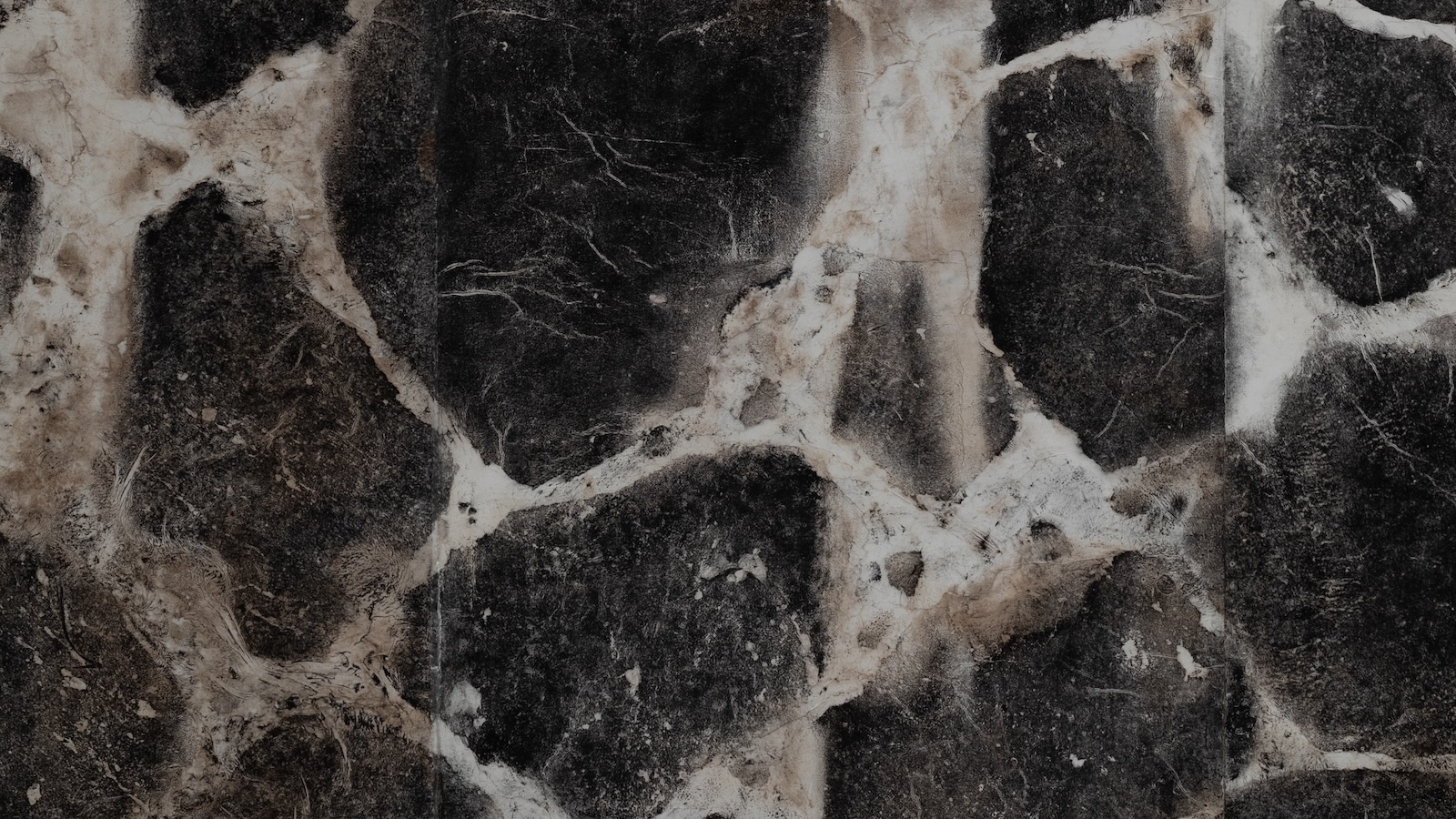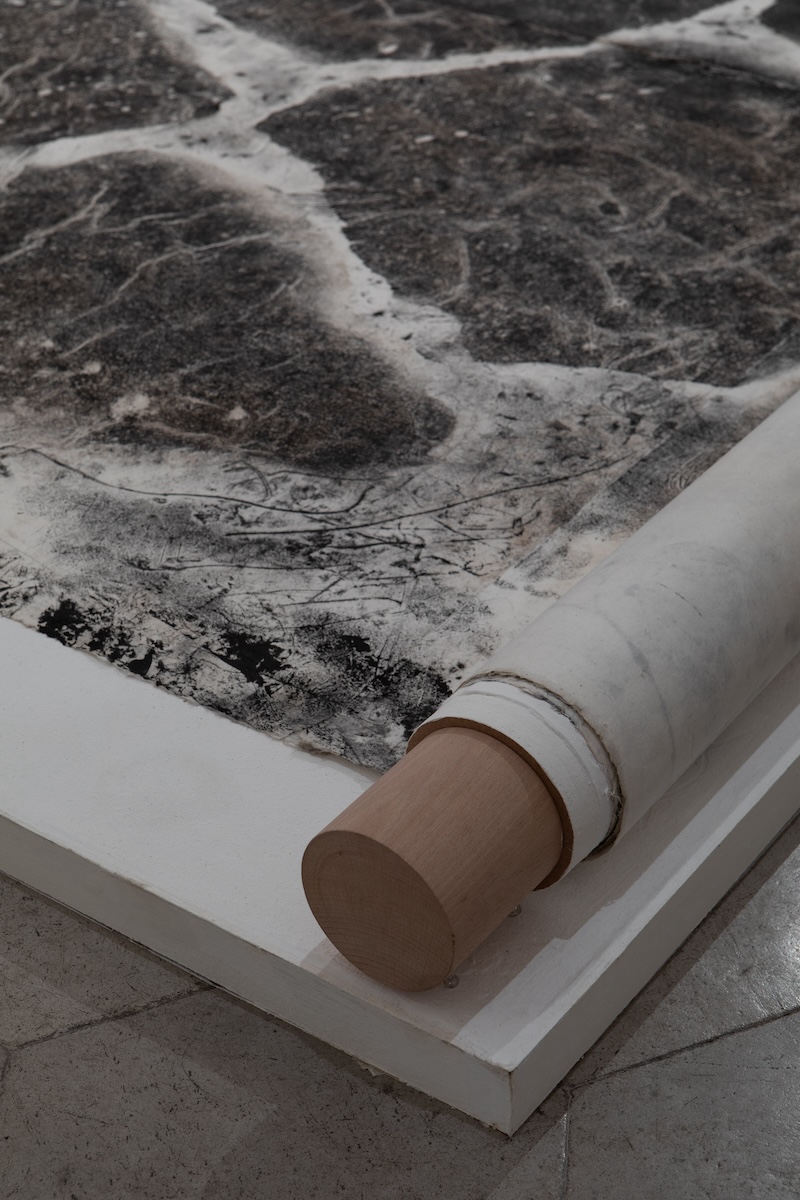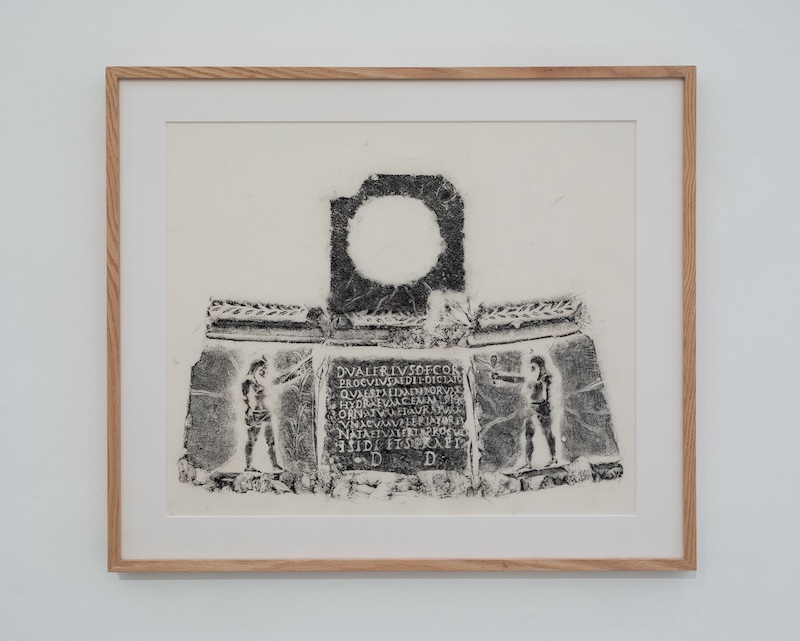
The Road
In the second room, we find The Road, a 22-meter-long print of one section of the Appian Way, built in various phases between 300 BCE and 190 CE. Xu collaborated with art and design students from l’Accademia di Belle Arti and the Istituto Europeo di Design (both based in Rome), as well as the Hang Seng University and Hong Kong Metropolitan University. Xu has worked directly on the basalt paving stones, using the same rubbing technique he used thirty-six years earlier. Bearing the imprint of the Appian Way and retaining the details of the blocks of stones, the lines etched in them are a testimony to centuries of use. For Xu, this technique has a rich historical, biographical, and conceptual significance: rubbing contains traces of the past, both as a transfer of evidence and as a revelatory encounter, a collective and collaborative process. Rubbing requires skill and repetition, combining the incremental diligence of the craftsman with a singular, artistic vision.

The rubbing unspoools across the floor of the gallery and up the far wall of the gallery (Photograph by Daniele Molajoli)

Detail (photograph by Daniele Molajoli)
Votive Altar
In addition to the rubbing of the Appian Way, an antique votive altar and a corresponding rubbing by Xu Bing are also on display in this gallery.
Like the fragment in the first gallery, the altar is a part of AAR's Norton–Van Buren Archaeological Study Collection.
Its cataloguing information is as follows:
Inscribed votive altar dedicated to Isis and Sarapis
First century BCE–first century CE
Fine-grained white marble
H., 21,5 cm.; L. at bottom, 19,5 cm.; W., 18,5 cm.
American Academy in Rome, Norton–Van Buren Archaeological Study Collection, Inv. No. 009449 (formerly 8949)
Provenience: From Nomentum, 1832; later purchased (probably 1893) by the American sculptor, W. W. Story.
Provenance: Gift of W.W. Story
This small altar contains a dedicatory inscription, indicating that Decimus Valerius Proculus, with Valeria Fortunata and Valeria Procula, gave a hydraeum, or water-container, to Isis and Sarapis. On the right and left of the inscription are Egyptianizing priests. The back of the altar is plain. The upper surface contains a roughly worked hemispherical depression and a pin-hole in each corner probably to secure the object, the hydraeum, to the base. The underside is picked smooth; it contains a square dowel hole near the right rear corner in which the dowel is still embedded. This piece refers to the popularity of the cult of Isis during the time of the Roman empire.

The votive altar (photograph by Daniele Molajoli)
The text of the inscription is:
D(ecimus) Valerius D(ecimi) f(ilius) Cor(nelia scil.tribu) / Proculus, aedil(is),
dictator, / quaest(or) alimentorum, / hydraeum [g] emmis ex/ornatum et auratum /
una cum Valeria Fortu/nata et Valeria Procula / Isidi et Serapi / d(ono) d(edit).

Xu's untitled rubbing of the votive altar (photograph by Daniele Molajoli)